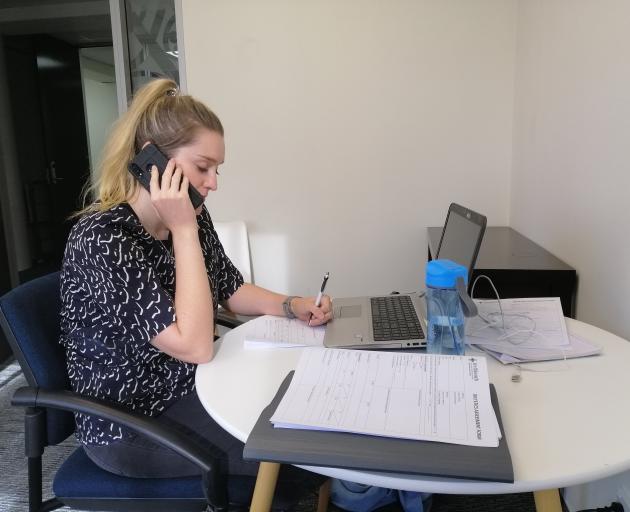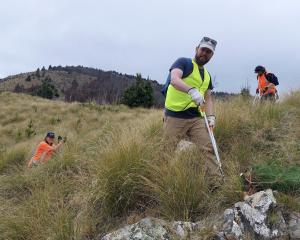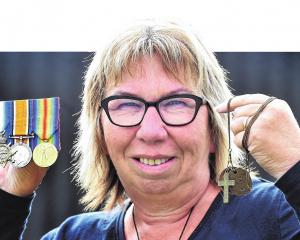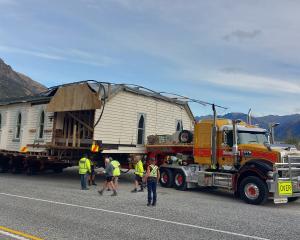
On March 23, southern general practices closed for almost all walk-in patients as a Covid-19 safety measure, an initiative which soon became Alert Level 4 standard procedure across New Zealand.
Suddenly, "seeing" one’s health professional became a matter of making a phone or video call, rather than visiting a medical centre or GP clinic.
Virtual consultations suddenly became the new normal, doctors or nurses assessing which patients absolutely needed to be physically seen by someone and which could be treated remotely.
Technology-driven consultations - telehealth - had long been on the wish-list of health administrators.
That was not only because they could free up more time for clinicians but also because many patients, especially those who live in remote areas, could be saved hours of travel time for a consultation which might take minutes.
New Zealand is now back at Alert Level 1, doctors’ surgeries have opened for business once more, but telehealth has not returned to the backburner.
The afternoon the ODT caught up with Wanaka GP Andrew McLeod he had already had five telephone consultations, and had another five booked for later in the day.
"Of the five this morning one has resulted in someone coming in to see me this afternoon and the others we have resolved. That has saved two elderly people - someone with an injury and someone with cancer - having to come in and sit around in our waiting room."
His surgery had offered telehealth in the past but struggled to get patients to take up the service.
While the surge in telehealth use stemmed from the need to prevent possible cross-contamination from potential Covid-19 patients, its retention was due to the greater convenience for many patients.
"It has become very quickly embedded in doctors’ daily schedules now, and we keep appointments free so that if anyone does need to be seen they can be," Dr McLeod said.
"This is a rural practice and the term ‘tyranny of distance’ comes to mind. Things that would be quite straightforward if you lived in Maori Hill or South Dunedin can become quite an adventure for Wanaka patients ...
"That creates risks personally for the patient and professionally for the doctor assessing whether it is safe to send someone to Dunedin or not.
"Having video consultation available is very helpful and the hospital has really taken that on board."
Various telehealth trials have now been accelerated, including one in which Dr McLeod’s practice has been involved, whereby arthritic Wanaka patients "meet" their Dunedin specialist via videolink and their GP is in the room to assist with any medical questions and physical checks.
Wanaka hotel manager Jenny Cusworth is a firm fan.

The mother of a type 1 diabetic daughter, she had already used telehealth for consultations with a Dunedin-based diabetes specialist, but recently used the telehealth trial for her own specialist appointment for rheumatoid arthritis.
"It’s a long way to go to be seen for a few minutes and be told ‘you look great, we’ll see you again in’ however long it is," Ms Cusworth said.
"Sometimes you might be told you need X-rays and you can’t always get them on the day, so that’s another trip.
"We are lucky that we have family down in Dunedin who we can stay with, but it’s still a three-hour drive down and accommodation and meals out that you normally wouldn’t have to pay for, and the time off work."
Ms Cusworth’s GP sat in on her arthritis consultation, and as well as checking specific parts of her body also used the camera to highlight areas for Dunedin specialist Jo Mitchell.
"Jo got me to move a little bit this way and a little bit that way so she could see how my body was moving, and the video connection was fine for that, there wasn’t anything complicated there," Ms Cusworth said.
"I could also get my prescription and everything while I was there, which was great - what would have taken a day took an hour."
Primary health organisation WellSouth has embraced the rapid expansion in telehealth, and its community dietitians are among the teams making greater use of the service.
“Most people prefer face-to-face appointments but some will choose virtual consults - particularly by telephone,” community dietitian Alice Talmage said.
“Virtual appointments won’t replace face-to-face appointments, but they are a good addition to the mix of how we deliver our service and care for patients and I am happy to be able to give patients more choice. ”
Telehealth features prominently in the Southern DHB and WellSouth’s primary and community strategy as a tool to improve equity of access to health services, especially for rural communities and the elderly.
A commitment to improved telehealth services is also a promise in the SDHB’s disability strategy, the expectation being that people with mobility issues will be enthusiastic adopters.
Much of the planning for the new Dunedin Hospital is also reliant on an expectation telehealth usage will increase, meaning some services that are able to see greater numbers of patients without them coming into the building will have different space requirements from what they now have.
The SDHB has a telehealth steering group, and earlier this year it commissioned a report for the board on the unexpected opportunity Covid-19 had provided to expand its use.
The report’s author, endocrinologist Patrick Manning, said telehealth had previously been used in an ad hoc manner within the SDHB, with no standard guidelines as to how.
Covid-19 had provided an "enforced trial" of various systems and technologies, and shown a framework needed to be established so telehealth services were optimal, Prof Manning said.
"The DHB needs to consider what platform would suit its practitioners and patient population best.
"It needs to be simple and accessible to clinicians, patients, allied health and primary care."
The format of telehealth consultations should be standardised and a “best practice” be made clear to practitioners.
"These include recommendations regarding pre-consultation preparation; appropriate patient identification methodology; patient privacy; technical aspects including shared screens etc; and documentation of the consultation," Prof Manning said.
"Also, it is important for clinicians to be aware of what types of consultations should probably not be delivered by telehealth, for example breaking bad news."
Future developments in telehealth could include home monitoring of patients and access to specialised care in other DHB’s, he said.












